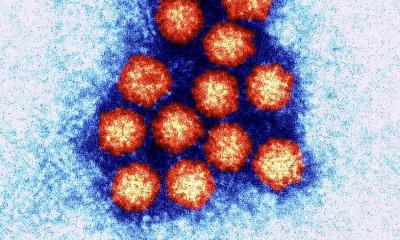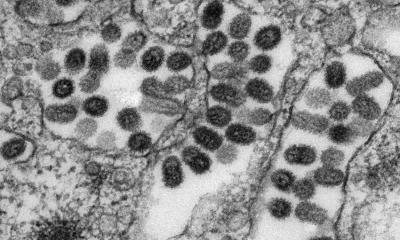© auimeesri – stock.adobe.com
News • West Nile virus and chikungunya virus
Mosquito-borne diseases in Europe: adapting to the ‘new normal’
The European Centre for Disease Prevention and Control (ECDC) has warned that record breaking outbreaks of West Nile virus (WNV) infection and chikungunya virus disease point to a new normal in Europe prompting a need for robust and coordinated response to protect public health across Europe.
Europe is experiencing longer and more intense transmission seasons for mosquito-borne diseases, including WNV infection and chikungunya virus disease. This shift is driven by climatic and environmental factors such as rising temperatures, longer summer seasons, milder winters and changes in rainfall patterns — conditions that combined create a favourable environment for mosquitoes to thrive and transmit viruses. Pamela Rendi-Wagner, ECDC Director, said: 'Europe is entering a new phase — where longer, more widespread and more intense transmission of mosquito borne disease is becoming the new normal. ECDC is working closely with affected countries and all Member States to provide tailored support, timely surveillance, updated public health guidance and practical tools to strengthen Europe’s response.'
As the mosquito-borne disease landscape evolves, more people in Europe will be at risk in the future. This makes prevention more important than ever, both through coordinated public health action and personal protection measures
Céline Gossner
Aedes albopictus, the mosquito that can spread chikungunya virus is now established in 16 European countries and 369 regions, up from just 114 regions a decade ago. Combined with increasing levels of international travel, this spread makes local outbreaks more likely. Europe has seen 27 chikungunya outbreaks so far in 2025, a new record for the continent. For the first time, a locally acquired chikungunya virus disease case has been reported in France’s Alsace region — an exceptional occurrence at this latitude, highlighting the continued northward expansion of transmission risk.
The distribution of West Nile virus cases in Europe continues to shift, with new areas reporting infections. Over the past decade, the infection has been detected in new areas every year. This year, infections have been reported in the Italian provinces of Latina and Frosinone, and Sălaj County in Romania for the first time. Europe has recorded the highest number of West Nile virus cases in three years. ECDC expects infections to continue rising, with a seasonal peak likely taking place in August or September.
New ECDC guidance outlines practical surveillance, prevention, and control measures for chikungunya virus disease, dengue, and Zika virus disease, with tailored recommendations for European countries, including those with limited experience or that have not previously faced the threat of these mosquito-borne diseases. Designed for public health authorities, the guidance provides a ready-to-use practical toolkit to assess risk levels and deploy preparedness and control measures suited to their specific situation. An ECDC guidance for West Nile virus is also available. Dr Céline Gossner, Head of Section Food-, Water-, Vector-borne and Zoonotic Diseases at ECDC, said: 'As the mosquito-borne disease landscape evolves, more people in Europe will be at risk in the future. This makes prevention more important than ever, both through coordinated public health action and personal protection measures. There is an urgent need to strengthen and scale up efficient, environmentally friendly mosquito control interventions'.
ECDC encourages individuals living in affected areas and visitors, especially the elderly, children, and people with weakened immune systems, to protect themselves against mosquito bites, using mosquito repellent, wearing long sleeves and trousers, especially at dawn and dusk, using window screens, bed nets and air conditioning/fans. Healthcare professionals should be aware of the circulation of these viruses and ensure early diagnosis. New vaccines have been developed for chikungunya virus disease, but there is no vaccine for human use against WNV infection.
Source: European Centre for Disease Prevention and Control
20.08.2025







